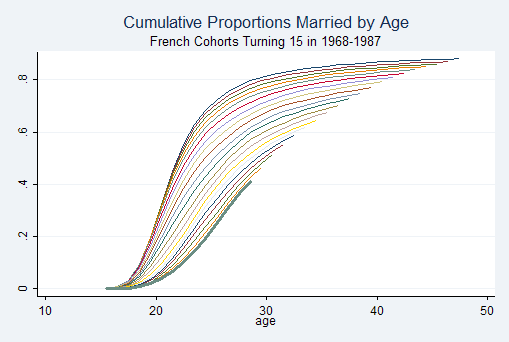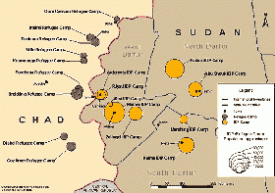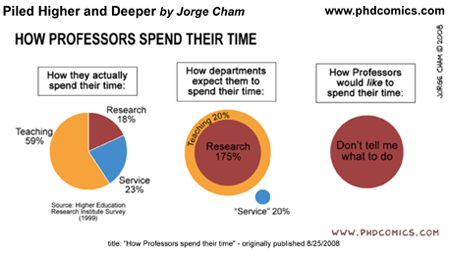
What Works
This example comes from a Princeton problem set in the Research Methods in Demography, a bit unexpectedly. What works is that the gently swooping shape is elegantly intriguing – an eye grabber that gets more interesting the harder you look at it. There is something to be said for beautiful forms, but unless there’s substance, info graphics that are only beautiful disappoint like vinyl siding. The fact that this one happens to generate such a fetching shape that it has been repeated throughout branded America is a real triumph.
Each line represents one cohort. The slope indicates the coherence within that cohort to age of first marriage – the steeper the line the more quickly the entire cohort goes from being single to being married. Later cohorts produce flatter slopes, indicating that there is a wider spread across ages of first marriage. It’s also easy to see that the age of first marriage slowly creeps up over time.
Note the popularity of this shape elsewhere:

What Needs Work
It’s not clear just which line goes with which cohort. Sure, demographers and pop culturists alike know that age of first marriage has been increasing over time and will assume that the cohorts who marry later are, in fact, the later cohorts, if we had different data that didn’t show such a smooth trend from year to year, it could be difficult to pick out which line represented just which cohort. Say there was suddenly a $10,000 incentive attached to getting married by age 22. Get married before your 22nd birthday and a giant $10,000 check arrives. That would push back the collective age at first marriage but in this chart, that line would just get buried among the earlier cohorts, or so I would predict. In this case, I might have recommended adding a year marker to every fifth line or so, just to reassure me that the pattern is smooth over time.
In 1900 the median age at first marriage was 21.9 for women and 25.9 for men and then these ages dropped til 1957 when they started rising again. Just saying. Age at marriage doesn’t have to keep going up.
Relevant Resources
German Rodriguez (2006) Office of Population Research, Princeton University. Problem Set 4: Marriage in France Research Methods in Demography.
US Census Bureau (2004) Estimated Median Age at First Marriage, by Sex: 1890 to Present in table format



